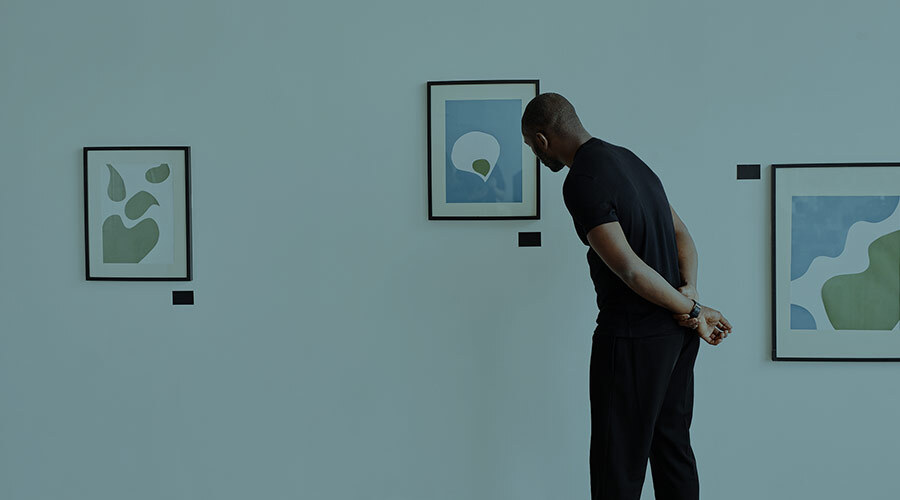Equitable representation and social justice in the museum and art world are hard to quantify. That’s what The Art Newspaper found out when it took a survey of 22 museums in the U.S. asking about progress made over the last year regarding diversity and inclusion.
The Art Newspaper survey included inquiries about museum staff, exhibitions, programs, collections and audience outreach. Only 15 museums choose to respond. Of those that did, only two provided budget amounts or specific endowments geared to diversity. Those were the Baltimore Museum of Art and the National Gallery of Art, respectively.
What would be considered enough is also difficult to measure. When the Baltimore Museum of Art announced an exhibition for March 2022 called “Guarding the Art,” curated by 17 members of the museum’s security team, art-world protest organizer Amin Husain said it wasn’t enough.
“Finding a bunch of Black and Brown people to give them a show, regardless of whether they work at a museum or not, is fantastic. Probably long overdue, but doesn’t address the structural issues that are on the table,” Husain told NPR. The NPR interview did not include a question for Husain about the $3 million budget the museum has earmarked for diversity and inclusion initiatives.
Smithsonian to Bridge Gap in Qualified Diverse Personnel
The Smithsonian Institution in Washington, D.C., a vast organization of education and research complexes, which includes 19 museums, 21 libraries and the National Zoological Park, has been doing deep work on diversity and inclusion initiatives as part of its strategic plan. The public and privately funded museum has published yearly reports which break down its allocation of resources to program, supplier and workforce diversity initiatives, among other details.
In August 2021, The Smithsonian American Art Museum announced a new professional development program which it hopes will nurture diverse talent in the field of art scholarship.
The two year pilot program, supported by a grant from the Dedalus Foundation is called: “Toward Equity in Publishing.” It was created to provide access to resources and connections for diverse scholars. The early-career editorial mentorships, workshops and programming will provide cultural capital and “demystify scholarly publication processes and help scholars revise manuscripts for submission and publication,” according to the museum.
Another Smithsonian museum fostering a new generation of diverse curatorial staff is at the National Museum of African American History and Culture (NMAAHC). The Robert Frederick Smith Internship and Fellowship program was created with a grant from Robert F. Smith. The program funds interns at the NMAAHC campus as well as the museums and galleries of Historically Black Colleges and Universities (HBCUs) and other institutions. The focus of the internship is related to digital filmmaking, imaging and preservation, including digital collections and content management.
Entrepreneur and philanthropist Smith, is also the subject of a work of art currently touring the United States. The show, MEN OF CHANGE, developed by the Smithsonian Institution Traveling Exhibition Services (SITES), includes the work of 25 contemporary artists who depict 25 African American men who have made a cultural impact. “Created for this exhibition, these works of art portray the truth of the African American experience, in history and today,” according to the museum. New York artist Mario Moore, created Seen [Robert F. Smith], 2018. Seen is a mixed media bust of Smith seen through plexiglass.
“Smith is a philanthropist and one of the (sic) America’s wealthiest men but has still faced issues based on his skin color,” Moore wrote in his artist statement.
MEN OF CHANGE will be at the African American Museum in Dallas, Texas until Sept. 22, 2021. Then the exhibition will be on view at the Charles H. Wright Museum Of African American History from Oct. 9 to Jan. 2, 2022.
Our Shared Future: Reckoning with Our Racial Past
The Smithsonian’s latest program, launched in August 2021, aims to educate and contextualize the experience of race in our cultural institutions. The program video, which is available on demand, is called, “Our Shared Future: Reckoning with Our Racial Past.”
Smithsonian Secretary, Lonnie G. Bunch III spoke to one of the program’s hosts, Sabrina Lynn Motley, about the role museums must play in this new era. He discussed how the Smithsonian is confronting the legacy of white supremacy in collections, and how museums must find a balance between scholarship and the community at-large.
“In essence, what museums need to do is to define reality and give hope. And part of the challenge of that is for museums to look at themselves,” Bunch said.
To learn more, check out the video of the program, which begins with an in-depth discussion on race and institutional accountability with Bunch, Damion Thomas, the Museum Curator of Sports for the Smithsonian National Museum of African American History and Pilar Ossorio, a professor of law and bioethics at University of Wisconsin-Madison and co-director of the Law and Neuroscience Program.






